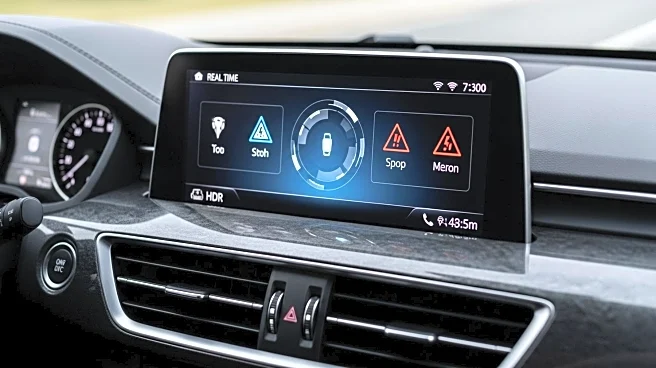What is the story about?
What's Happening?
A recent study has introduced a new pathfinding technology designed to assist visually impaired individuals with collision avoidance. The technology utilizes advanced panoptic segmentation methods to enhance navigation capabilities. The study compared the proposed method with existing systems, demonstrating its effectiveness in retaining instances missed by conventional techniques. The technology was tested on a custom dataset under challenging conditions such as rain, low-light environments, and occlusions, yielding satisfactory results. The system employs a custom dataset containing panoptic labeled images and videos, ensuring high data quality and annotation accuracy.
Why It's Important?
This development is significant as it offers improved mobility solutions for visually impaired individuals, enhancing their independence and safety. The use of panoptic segmentation allows for precise object detection and navigation in complex environments, addressing the limitations of existing assistance systems. By leveraging advanced computer vision techniques, the technology provides a comprehensive evaluation of image segmentation and class recognition, ensuring accurate navigation assistance. This innovation aligns with broader efforts to integrate technology into assistive devices, improving the quality of life for individuals with disabilities.
What's Next?
The study suggests further exploration of the technology's application in real-world scenarios, including its integration into wearable devices or mobile platforms. The development of lightweight models suitable for low-power edge devices could expand accessibility and usability. Continued collaboration between researchers and industry stakeholders is essential to refine the technology and address challenges related to computational complexity and real-time inference. As the technology evolves, it may pave the way for more advanced assistive solutions, enhancing mobility and independence for visually impaired individuals.
Beyond the Headlines
The ethical considerations surrounding the use of custom datasets for visually impaired assistance systems are crucial. Ensuring data privacy and protection of sensitive information, such as individuals' faces and license plates, is paramount. The study adheres to ethical guidelines and regulations, obtaining informed consent from participants. This approach highlights the importance of responsible data handling and the need for transparency in developing assistive technologies. The integration of ethical practices in technology development fosters trust and supports the broader adoption of innovative solutions for individuals with disabilities.
AI Generated Content
Do you find this article useful?














